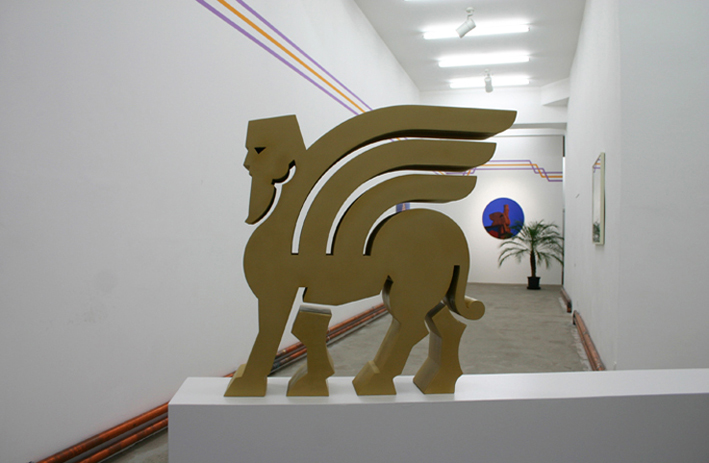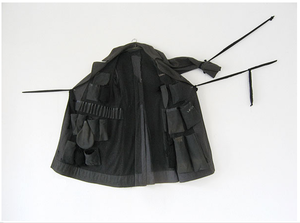This is an archive of the ArtCat Zine, 2007-2009. Please visit our new project, IDIOM.
Recently by D-L Alvarez

City of Commerce
Sophie-Therese Trenka-Dalton’s
Nice & Fit - Brunnenstrasse 13, Berlin DE
3 April - 24 May 2008
Heiligsprechung
Jana Gunstheimer’s
filiale - Brunnenstrasse 188-190, Berlin DE
4 April - 24 May 2008
Running concurrently, directly across the street from each other in Berlin, are exhibitions by Sophie-Therese Trenka-Dalton and Jana Gunstheimer.
Gunstheimer’s Heiligsprechung (Canonization) covers a period of time starting in 1977 when citizens in Austria could apply for sainthood. The exhibition is filled with the documents and artifacts of the applicants, and the eventual exposure of the government’s offer as a sham designed to generate revenues from application fees.
Trenka-Dalton likewise digs into history for her exhibition City of Commerce, which examines Assyrian culture in a manner that is now almost the only way left to experience it: through its material representations and reconstructions in museums, reproductions on postcards, or its influence on contemporary architecture. Some of her artifacts are gathered from actual field trips: not to Iraq, but rather to sites like the Louvre, the British Museum, and The Citadel, an outlet mall in a suburb of Los Angeles housed in what used to be a tire factory modeled on the Palace of King Sargon II.
The exhibitions have much in common. Both women are excellent crafts-persons and both have chosen the language of museums — the vaults of history — to speak on the unreliability of these stories.
In the case of Heiligsprechung, the feeling of the exhibition is similar to having entered a shrine dedicated to a singular event. The model of the arch, that was to be constructed over the street where the saints would be paraded, feels cheap. It is wonderfully constructed, but from materials that betray the museum’s limited budget. The framed application forms of the people eager to be recognized for their goodness are yellowed with time, and it is easy to imagine an elderly volunteer sitting in a tobacco-stained ticket booth at the entrance to these collected stories. And what stories they are! Take for example a group of criminals determined to reform themselves for the good; as a symbol of their intentions, the group had their wrists tattooed declaring their resolve: to be kind, to protect you, to shield your life from the sort of persons they used to be. But how sincere are they? The cover letter they turn in with their sainthood application form is rather dodgy, and we begin to suspect that these men are not as reformed as they'd like us to believe.
ZINE
HOME
TIPS / COMMENTS
CATEGORIES
CONTRIBUTORS
- Greg Afinogenov
- B. Blagojevic
- Adda Birnir
- Susannah Edelbaum
- Julie Fishkin
- Paddy Johnson
- Jessica Loudis
- Christopher Reiger
- Andrew Robinson
- Peter J. Russo
- Blythe Sheldon
- S.C.Squibb
- Hrag Vartanian

